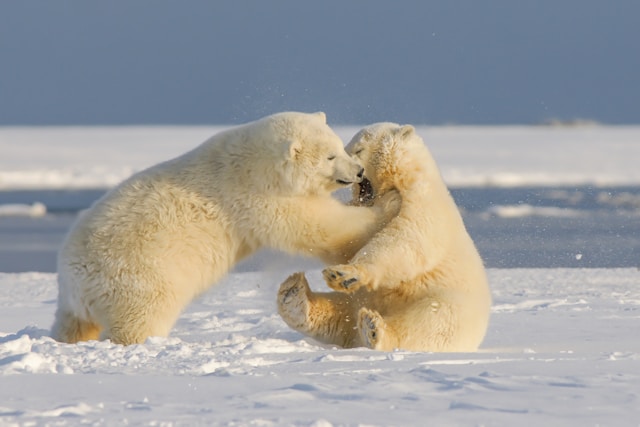Rising temperatures in the Arctic bring a surge in parasites and pathogens affecting polar bears, with implications for the entire ecosystem.
As the Arctic continues to warm at an alarming pace, polar bears are encountering a rising tide of health threats, including parasites, bacteria, and viruses, according to a recent study published in PLOS ONE. Researchers have observed that polar bears in the Chukchi Sea, a region between Alaska and Russia, are now being exposed to a greater variety of pathogens than they were 30 years ago. While it’s not yet certain how these pathogens affect the bears’ health, scientists worry that this development signals a broader shift in the Arctic ecosystem due to climate change.
The Arctic is heating up four times faster than the global average, creating conditions that favour the spread of pathogens. As temperatures rise, previously inhospitable environments in the Arctic now allow bacteria, viruses, and parasites to survive and multiply. The melting of permafrost also risks releasing dormant microbes, sometimes referred to as “zombie viruses,” and potentially harmful bacteria, including anthrax.
Embed from Getty Images“The polar bears are a good indicator for what’s happening in the ecosystem,” explained Karyn Rode, a wildlife biologist at the U.S. Geological Survey and co-author of the study, in an interview with The Washington Post. As top predators, polar bears are likely to reflect changes affecting other Arctic animals, many of which share their environment and food sources.
The study focused on polar bears in the Chukchi Sea, where shrinking sea ice has forced these animals to adapt their behaviour. Each summer, as the ice melts earlier and re-forms later, polar bears are spending more time on land. As their traditional food sources become less accessible, they are increasingly drawn to alternative food supplies, including human refuse and other items potentially tainted with pathogens. This change in diet is thought to play a role in their rising exposure to health threats.
Researchers conducted a comprehensive analysis by collecting blood and faecal samples from 232 polar bears between 2008 and 2017, later comparing these findings with samples taken from 1987 to 1994. The recent samples revealed an increased presence of antibodies to five different pathogens. Among these were Toxoplasma gondii, Neospora caninum, Francisella tularensis (which causes tularemia, or “rabbit fever”), Brucella abortus/suis, and the canine distemper virus, all of which present potential risks to polar bear health.
Perhaps the most notable finding was the sharp rise in Neospora caninum, a parasite usually associated with dogs and cattle. Between 2008 and 2017, about 65 per cent of polar bears tested positive for the parasite, a stark increase from just 14 per cent in the earlier period. Additionally, the presence of Toxoplasma gondii antibodies jumped from 2.2 per cent to 14.1 per cent, and Brucella abortus/suis prevalence rose from 3.5 per cent to 10.9 per cent.
The study also revealed variations in pathogen exposure based on diet and sex. Female polar bears, who spend significant time on land to give birth and raise their cubs, exhibited higher exposure to certain pathogens. This observation aligns with findings that some of these pathogens are more prevalent on land. Yet diet remains a critical factor, as the bears primarily contract pathogens through their prey, including seals, walruses, and whales, which may also face greater exposure to new pathogens.
Although the researchers did not directly test these prey species, the presence of such pathogens in polar bears suggests a potential ripple effect across the food chain. This indicates that seals, walruses, and whales might also be increasingly vulnerable to these new health threats as the Arctic environment continues to change.
The study underscores the complex web of interactions triggered by climate change in the Arctic, where polar bears serve as a key marker of ecosystem health. If pathogens continue to increase in prevalence and diversity, it could spell trouble not only for polar bears but also for other animals that rely on the same fragile ecosystem. Researchers now face the challenge of determining the exact health impacts on polar bears and monitoring potential risks to the broader Arctic wildlife population.
